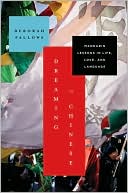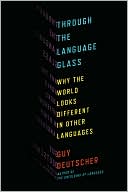Health and the Rhetoric of Medicine
Assessing rhetorical principles of contemporary health issues\ \ Hypochondriacs are vulnerable to media hype, anorexics are susceptible to public scrutiny, and migraine sufferers are tainted with the history of the “migraine personality,” maintains rhetorical theorist Judy Z. Segal. All are influenced by the power of persuasion.\ \ Health and the Rhetoric of Medicine explores persistent health conditions that resist conventional medical solutions. Using a range of rhetorical...
Search in google:
Assessing rhetorical principles of contemporary health issues Hypochondriacs are vulnerable to media hype, anorexics are susceptible to public scrutiny, and migraine sufferers are tainted with the history of the “migraine personality,” maintains rhetorical theorist Judy Z. Segal. All are influenced by the power of persuasion. Health and the Rhetoric of Medicine explores persistent health conditions that resist conventional medical solutions. Using a range of rhetorical principles, Segal analyzes how patients and their illnesses are formed within the physician/patient relationship. The intractable problem of a patient’s rejection of a doctor’s advice, says Segal, can be considered a rhetorical failure—a failure of persuasion. Examining the discourse of medicine through case studies, applications, and analyses, Segal illustrates how illnesses are described in ways that limitpatients’ choices and satisfaction. She also illuminates psychiatric conditions, infectious diseases, genetic testing, and cosmetic surgeries through the lens of rhetorical theory. Health and the Rhetoric of Medicine bridges critical analysis for scholarly, professional, and lay audiences. Segal highlights the persuasive element in diagnosis, health policy, illness experience, and illness narratives. She also addresses questions of direct-to-consumer advertising of prescription drugs, the role of health information in creating the “worried well” and problems of trust and expertise in physician/patient relationships. A usefulresource for critical common sense in everyday life, the text provides an effective examination of a society increasingly influenced by the rhetoric of health and medicine.
Acknowledgments ixIntroduction: The What, Why, and How of a Rhetoric of Medicine 1A Kairology of Biomedicine 21Patient Audience: The Rhetorical Construction of the Migraineur 37The Epideictic Rhetoric of Pathography 59Hypochondria as a Rhetorical Disorder 74A Rhetoric of Death and Dying 91Values, Metaphors, and Health Policy 115The Problem of Patient "Noncompliance": Paternalism, Expertise, and the Ethos of the Physician 133Conclusion: The Usefulness of a Rhetoric of Medicine 153Notes 161Works Cited 187Index 211
\ From the Publisher“Judy Z. Segal makes a strong contribution to medical rhetoric in a work that is well reasoned and ably argued, a work that methodically extends the province of rhetorical analysis in ways both insightful and useful.”—Rhetoric Review\ \ \ \ \ \ Rhetoric Review\ - Stephen A. Bernhardt\ I confess that I nervously accepted the invitation to review Health and the Rhetoric of Medicine for this journal. What might it be? A tirade against the drug industry, where I have spent years consulting, and against which many assaults have been launched? Would it be an attack on Western medicine from someone committed to alternative medicine or herbalism or homeopathy? Would it argue in favor of health and wellness while opposing medical intervention and treatment?\ The book is none of these things. Rather, Judy Z. Segal makes a strong contribution to medical rhetoric in a work that is well reasoned and ably argued, a work that methodically extends the province of rhetorical analysis in ways both insightful and useful. The primary theoretical grounding for her work is Aristotelian. Segal builds a kairology of biomedicine, examining the notions of contingency and fitness-to-situation as applied to current issues in health and medicine. Segal reads the situations of biomedicine across a range of contemporary discursive fora, asking why medical discourse takes the shapes it does, what purposes are served, who participates, what the situational contingencies are, and who controls or is controlled by the governing narratives. Her secondary theoretical allegiance is to Kenneth Burke, for she sees medical discourse as saturated with rhetoric, and she takes as her central purpose to convince the reader that humanities research should importantly influence medical policy setting and clinical practice. Segal investigates the terminological screens through which disease and treatment are viewed, offering readings of contemporary medical practice. Broadly, she investigates persuasion in oral and written discourse, extending her analysis beyond asking what constitutes an intellectually convincing argument to examine what actually motivates people to action. She is careful to note that her work is intended to be useful, though not necessarily in an applied sense. That is, Segal wants to be clear that she is not advising health benefits managers on how to communicate more successfully with clients. Rather, she seeks to illuminate the critical elements of situated discursive practice in health and medical environments.\ Toward this purpose Segal investigates certain well-defined genres and situations that tend to produce highly patterned and often disabling discourses. In an early chapter, she discusses the situation of the migraineur as the patient has been constructed by various physician narratives, associated with false complaints, and given a reputation in the professional literature that could never quite be rehabilitated. In a chapter on "The Epideictic Rhetoric of Pathography," she again looks at narratives of illness, including self-representations on "pro-Ana" websites, where anorexia is portrayed as a lifestyle choice, not a disease, and where potential audiences who are not yet committed to the lifestyle are warned to stay away. In the same chapter, Segal examines the infantilization of women with breast cancer, citing Barbara Ehrenreich's Harper's essay ("Welcome to Cancerland: A Mammogram Leads to a Cult of Pink Kitsch." Harper's Magazine 302 [Nov. 2001]: 43–53), portraying Ehrenreich as the "renegade narrator, who refuses to tell a story of battling and enduring and overcoming, refuses to be relentlessly upbeat" (66). In these discussions Segal herself is shrewd, sharp, and incisive. She peels back the layers of symbolicity, revealing how our discourses come to govern our construction of ourselves as sick people and our construction of and by those attending our illnesses.\ In a later chapter, "Hypochondria as a Medical Disorder," Segal argues that "discourse fills the space that medicine leaves unoccupied" (75). She traces the various constructions of the disorder historically, from an eighteenth-century notion of hypochondria as a "pitiable, organic distemper, featuring characteristic. ills from flatulence and fatigue to the distress of rumination on these complaints," a distress characteristic of men and constructed in opposition to the hysteria thought to describe women's conditions (76). She notes the increasing prevalence of cyberchondria, with sufferers matching their real or imagined symptoms with dire disease descriptions easily accessed online. Segal's discus; sion is lively, moving from Kant to Ms. magazine to contemporary medical research, attentive to psychiatric and sociological approaches to a pathetic condition that inspires sympathy. It is to Burke that Segal eventually turns, however, arguing for the usefulness of dramatism to illuminate hypochondria "in its humanity, its symbolicity, and its activity" (90). She asks not only what hypochondria is, but also what it does for those who have it.\ Segal's topics of interest tend to center on conditions that resist clear medical diagnosis and treatment: erectile dysfunction, irritable bowel syndrome, depression. Such topics tend to take the discussion toward the fringes of modern medicine, an interesting if sometime inconclusive region to inhabit. In brief discussions she notes the increasing participation in recreational diagnostics, where with or without a physician's consult, one may pay for a battery of test results in a search to see if something might be wrong. At the true fringes, Segal explores the community of amputee wannabees. Her readings of these medical and disease communities always focus on the persuasive and constitutive act of naming a condition and providing a narrative space for people to inhabit that would not have existed without the naming and narrating. \ Perhaps her most compelling chapter, at least for this reader, is "A Rhetoric of Death and Dying." Adopting a discourse analysis approach to her experience of the death of her own mother, Segal uses transcripts she created at the time, having written out the transcripts soon after she and her sister had medical conversations with attending physicians and psychiatrists. Her mother was clearly dying, proximally of complications of pneumonia, but more essentially from starvation and misery. The chapter chronicles a rhetoric of avoidance, of refusal to grant control or power to Segal and her sister, into whose hands her mother's care had been entrusted. Segal confronted a medical establishment that refused to face the imminence of death, that was unable to allow the conversations that should have transpired, and that continued to urge treatments of various sorts (shock therapy, drugs, neurological testing) in the face of death, extending the period of agony and debasement. Essentially, Segal establishes the taboo nature of discourses of death in institutions devoted to death:\ \ During these three months, the subject of death in the context of the nursing home was taboo. The staff created no openings for it, and when the daughters broached the topic, they were quickly silenced. Evidently, the patient was too healthy to die, even if she was dying too inevitably for any but the most unimaginative interventions. (98)\ \ Segal contrasts the allowable discourses in this setting with those in another hospital, where Segal acted as researcher in a setting where the explicit goal was to create the space and the language for dialogue, with a research team working toward a situation where both patients and doctors could find room for meaningful discussion of death and life. In this chapter Segal maps a role for the rhetorical critic.\ This review suggests the interesting range of rhetorical investigations in this brief but insightful book. Segal has much to say in other chapters about how health policy is shaped by values and metaphors and how issues of patient noncompliance are shaped by the ethos of the physician. In each case Segal centers the discussion on the usefulness of a rhetoric of medicine, making a persuasive argument for an understanding of action as centered in discourse and controlled to some extent by discourse. Throughout, Segal writes with a deft hand and sharp analytic skills. The book is very much worth reading.\ \ \








